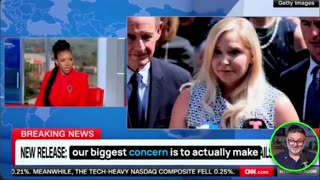Premium Only Content

50 Years of Change at US Colleges #trending #new #college #facts
Top 5 videos designed to entertain and inform. https://www.youtube.com/playlist?list=PL3vnBajqnW3vZKSLYQr2vjeEfdCJsujX-
Welcome to Top Five Hive Mind! Today, we’re diving into how college majors have evolved over the last five decades, from 1970 to the present. What did students study back then, and how does it compare to today? Let’s break it down by decade, using data from the National Center for Education Statistics, NPR, and more. Grab a notebook—this is going to be a fascinating ride!
Let’s start in the 1970s. Back then, education majors were the stars of the show. In 1970, a whopping 21% of bachelor’s degrees went to future teachers. But by 1980, that number dropped to 12%. Why? Well, teaching salaries couldn’t compete with emerging fields, and there was a perceived oversupply of teachers. Meanwhile, business majors—like accounting and marketing—took off, jumping from 13% in 1970 to 20% by 1980. The corporate world was calling, and students answered! Social sciences and humanities held steady at 15-20%, but STEM fields like engineering and sciences were smaller, at about 12% combined. Computer science? Barely a blip at less than 1%.
Fast forward to the 1980s—think big hair and bigger ambitions! Business majors hit their peak, making up 24% of degrees by the late ‘80s, fueled by the Wall Street boom. Education continued its slide, down to 8% by 1990. But here’s where things get techy: computer science started to surge, reaching 4% by 1990 as personal computers went mainstream. Health professions, like nursing and pre-med, also grew, from 3% in 1970 to 5% by 1990. Humanities and social sciences? They dipped to around 12%, as students chased more "practical" majors.
The 1990s brought the dot-com bubble, and with it, a tech explosion! Computer science degrees peaked at 5% by the late ‘90s, pushing STEM fields to 15% of all degrees. Business stayed strong at 20-22%, though its growth slowed. Health majors continued climbing, hitting 7% by 2000, thanks to an aging population and healthcare demand. Education leveled off at 7-8%, while psychology rose slightly to 5%, reflecting interest in mental health careers. Humanities kept falling, dropping below 10%.
Now, the 2000s. Health professions surged to 10% of degrees by 2010, driven by jobs in nursing and physical therapy. STEM fields grew to 18%, with computer science recovering from the dot-com bust and engineering steady at 5-6%. Business held at 20%, but education hit a low of 6% by 2011—teaching just wasn’t as appealing. Humanities and social sciences continued their decline, down to 7% and 8%, as students favored STEM and health for better job prospects.
Into the 2010s, STEM took the lead, making up 23% of degrees by 2019. Computer science hit 6%, engineering 6%, and biological sciences 5%. Health professions stayed strong at 10-12%, with nursing and public health booming. Business dropped slightly to 19%, while education remained at 6%. Humanities hit rock bottom at 5%, and social sciences fell to 7%. Students were clearly prioritizing majors with clear career paths and higher salaries.
Finally, the 2020s. As of 2023, STEM degrees reached 25%, with computer science at 7%, engineering at 6%, and new fields like data science gaining traction. Health professions hit 13%, fueled by post-COVID demand for nurses and public health experts. Business fell to 18%, but subfields like data analytics grew. Education saw a slight uptick to 7%, thanks to teacher shortages and incentives like loan forgiveness. Humanities stayed low at 4-5%, though interdisciplinary fields like environmental studies, under social sciences, rose to 8%.
So, what’s the big picture? Business grew from 13% in 1970 to a peak of 24% in the ‘80s, then fell to 18% by 2023. Education dropped from 21% to 6% by 2011, recovering slightly to 7%. Health professions soared from 3% to 13%, and STEM jumped from 12% to 25%. Humanities and social sciences? They’ve fallen from 15-20% to around 9-12%. These shifts reflect economic demands—corporate jobs in the ‘80s, tech in the ‘90s, and healthcare today. Students are chasing ROI, but some argue this undervalues the critical thinking skills humanities provide. What do you think? Let me know in the comments!
Have you ever wondered what the most popular shoe was in the decade you were born? What were the coolest bikes in the 80s? What were the best Mustache styles or fashions? We research interesting and unique topics. We will keep you guessing "WHAT IS NEXT?" every single Day and always strive to give you something interesting to watch and learn while having fun.
Feel free to comment if you want us to research a topic and make a video about. Lists and funky, quirky, and unique perspectives on things you NEVER KNEW you NEEDED TO KNOW.
-
 1:30:43
1:30:43
Steven Crowder
3 hours agoToday, Everybody Gets the Smoke
193K86 -
 16:09
16:09
Professor Nez
18 minutes agoEpstein Narrative COLLAPSES in Jasmine Crockett's FACE on LIVE TV!
1 -
 41:25
41:25
The Rubin Report
1 hour agoBari Weiss Shocks Media Establishment with Ballsy Next Move That No One Expected
4.98K11 -
 LIVE
LIVE
The Shannon Joy Show
1 hour agoSJ Show Nov 14 - The SJ Friday Matinee Watch Party With Commentary Featuring IDIOCRACY!
140 watching -
 LIVE
LIVE
Trumpet Daily
1 hour agoTrumpet Daily LIVE | Nov. 14, 2025
442 watching -
 1:02:21
1:02:21
VINCE
3 hours agoDoes The FBI Have Hillary's Missing Emails? | Episode 169 - 11/14/25 VINCE
177K136 -
 LIVE
LIVE
LFA TV
15 hours agoLIVE & BREAKING NEWS! | FRIDAY 11/14/25
3,715 watching -
 1:25:56
1:25:56
Graham Allen
4 hours agoThis Is How We Win The Midterms!!! No More Games….WIN OR WE LOSE EVERYTHING!
109K1.7K -
 LIVE
LIVE
LadyDesireeMusic
2 hours ago $4.36 earnedLive Piano Music & Convo - Make Ladies Great Again
139 watching -
 1:40:24
1:40:24
Badlands Media
7 hours agoBadlands Daily: November 14, 2025 – Epstein Mania, Media Meltdowns & Mortgage Mayhem
28.5K12